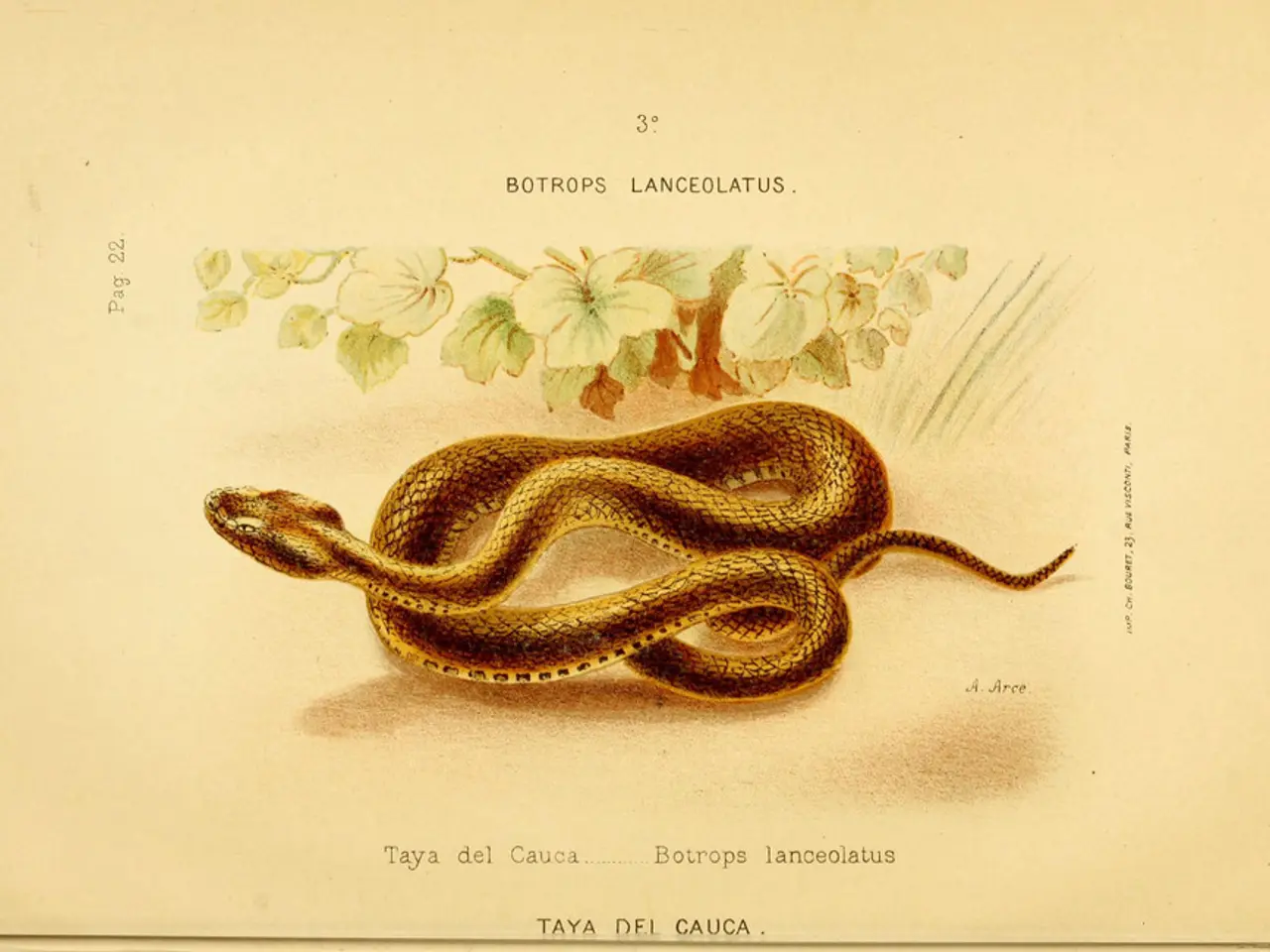Unbelievable Insights into the World of Snakes
In the vast and diverse world of reptiles, snakes have long been known for their distinctive hissing sound. However, recent research has revealed that this is just one of many defensive mechanisms employed by these fascinating creatures.
Snakes, carnivorous by nature, have a unique advantage in their infrequent meals. Their flexible jaws allow them to swallow large prey whole, a feature that proves crucial in their survival. Yet, it's not just their physical adaptations that make snakes formidable predators; their defensive strategies are equally intriguing.
For instance, the well-known rattling of rattlesnakes and the sound produced by saw-scaled vipers are not the only examples of sonic warnings among snakes. Several other species, such as the Bullsnake, Northern Pine Snake, King Cobra, and even the less-known Catesby's snail-eater, have been observed to hiss, rumble, or even growl as a means of warning off threats.
The Bullsnake, a large North American species, can rear up, hiss loudly, and vibrate to ward off threats, producing a deep hissing or rumbling sound when nervous. The Northern Pine Snake, found in the eastern U.S., is known to produce a loud, startling hiss accompanied by body inflation and vibration of dry leaves, mimicking the warning sound of rattlesnakes but posing no harm to humans.
The King Cobra, the world's largest venomous snake found in Asia, is capable of making a distinctive sound often likened to a dog’s growl. This growling noise functions as a warning or display of aggression, an unusual behaviour among snakes but effective in deterring threats.
However, the defensive "cry" of Catesby's snail-eater, a species discovered in the Amazon, stands out as a unique behaviour among snakes. This is the first known snake voice to be discovered, marking a significant breakthrough in our understanding of these elusive creatures.
But defensive sounds aren't the only mechanisms snakes use to protect themselves. Two Arizona species, Sonoran coral snakes, and Chihuahuan hook-nosed snakes, produce a defensive "fart" called cloacal popping when in distress. This lesser-known defensive mechanism, while not as audible as hissing or growling, serves as an effective deterrent for potential predators.
In conclusion, while the hiss is a common defensive sound among snakes, the variety of defensive mechanisms used by these creatures is vast and fascinating. From the well-known rattling of rattlesnakes to the lesser-known cloacal popping of Arizona's Sonoran coral snakes and Chihuahuan hook-nosed snakes, snakes have evolved a wide range of strategies to survive in their environments. And with ongoing research, we are sure to uncover even more secrets about these enigmatic creatures.
Scientists have observed that various snake species, including the Bullsnake, Northern Pine Snake, King Cobra, Catesby's snail-eater, and certain Arizona species like the Sonoran coral snakes and Chihuahuan hook-nosed snakes, utilize not only hissing as a defensive mechanism but also other sounds such as rumbling, growling, and even cloacal popping, signifying the diverse strategies employed by snakes to protect themselves in their environments.
Recent research on Catesby's snail-eater, a species found in the Amazon, has discovered its unique vocalization, marking a significant breakthrough in our understanding of snake defense mechanisms and further unraveling the complex nature of these elusive creatures in the field of science and health-and-wellness, as well as fitness-and-exercise, considering the importance of understanding the behaviors of predators for human safety and well-being.




